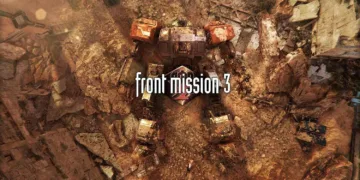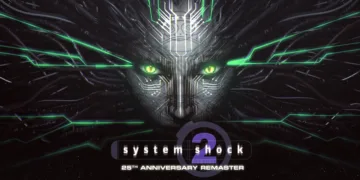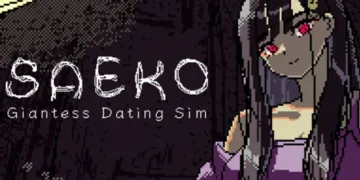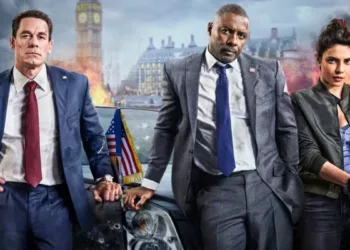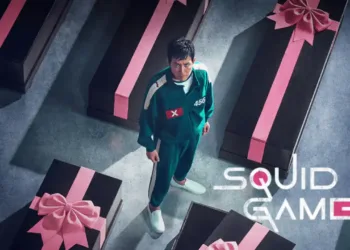The island of Berk exists in a state of perpetual siege. Its Viking inhabitants have built their entire society around a single, organizing principle: fighting dragons. This foundational conflict is presented as a constant, destructive reality, a generational war where winged monsters attack with fiery regularity.
The spectacle has a certain energy, yet the carnage remains carefully calibrated for a family audience, focusing on shattered timber rather than genuine peril. It is a world defined by a very specific kind of problem.
In this society of hammers and axes, Hiccup is a boy of gears and levers. As the son of the chieftain, Stoick the Vast, he is a walking paradox—an heir with no apparent capacity to inherit the one skill that matters. His intellectual curiosity and inventive spirit are treated not as assets, but as liabilities.
The narrative machinery clicks into place when one of Hiccup’s awkward contraptions succeeds where brawn has repeatedly failed. He manages to bring down a Night Fury, a creature so mythic its existence is more rumor than fact, setting the stage for a story that will test his world’s oldest beliefs.
The Pillars of a Perilous Society
The culture of Berk is a monolith, shaped entirely by its war with dragonkind. To bolster this single-mindedness, the script offers a tidy piece of world-building: this is not just any Viking village, but an assembly of the world’s greatest dragon slayers, a specialist task force gathered to solve their pest problem. It is an efficient narrative justification for both their extreme focus and the diverse makeup of their tribe. Theirs is a society where every individual’s worth is measured by their contribution to the fight.
At the apex of this structure stands Stoick the Vast. Gerard Butler, reprising his voice role with a formidable physical presence, portrays a leader who fully embodies the village’s ethos. The central tension of his character is not just ruling his people, but parenting a son who is the antithesis of their values. His palpable disappointment in Hiccup provides a constant, personal source of conflict.
Acting as a buffer is Gobber, the blacksmith instructor. Nick Frost gives him a grounded pragmatism, a man who has lost limbs to the cause yet maintains a wry humor that makes the harsh reality of their lives more palatable. He is the story’s designated mentor, offering a slightly more flexible perspective than his chief.
The next generation serves as a constant reminder of the standard Hiccup fails to meet. They are the products of this warrior culture, with Astrid at their head. As portrayed by Nico Parker, Astrid is the model student in Berk’s singular curriculum: she is skilled, disciplined, and fiercely competitive.
She is the narrative foil to Hiccup, the embodiment of the success he is supposed to crave. The other trainees, from the bookish Fishlegs to the bickering twins, fill out the social landscape, each representing a different facet of the norm from which Hiccup is excluded.
Constructing a Cross-Species Alliance
The story pivots on a single, quiet decision. Having successfully captured the mythical Night Fury, Hiccup stands before the very thing that could win him acceptance. The narrative path is clear: kill the beast, become a hero. Yet, in the silent forest, faced with the helpless dragon, he makes a choice that re-routes his entire arc.
The act of cutting the ropes instead of taking a life is the film’s central moral event, a rejection of his culture’s foundational creed in favor of an instinct he doesn’t yet understand. It is a classic narrative turning point, executed with deliberate simplicity.
What follows is a patient exercise in visual storytelling. The film wisely slows its pace, dedicating significant screen time to the methodical process of building trust between boy and beast. These nearly wordless sequences in the isolated cove are where the movie’s emotional core is forged. Through tentative offerings of fish and hesitant gestures, a bond is constructed piece by piece.
The design of Toothless is instrumental here. He is a careful calibration of reptilian power and familiar feline mannerisms, his expressive, wide eyes doing much of the heavy lifting. This design choice makes him immediately accessible, a creature of immense power who can also be disarmingly playful, ensuring the audience connects with him just as Hiccup does.
This newly formed alliance finds its physical expression in flight. Hiccup’s talent for invention, once a source of ridicule, becomes the mechanism that restores Toothless’s mobility. The prosthetic tail fin and saddle are not just clever gadgets; they are a tangible representation of their codependence. The flying sequences that result are the film’s reward for its patient character work.
They are moments of pure exhilaration, visually representing the freedom and strength these two outcasts find in each other. Here, the story’s central metaphor is made explicit: two incomplete individuals, one socially and one physically, create a partnership that allows them both to soar.
Rendering a World of Scale and Sound
The technical challenge of a film like this lies in making the fantastical feel tangible. On this front, the visual effects work succeeds, particularly in its star creature. The various dragons are integrated smoothly into the live-action plates, but the success of the entire visual enterprise rests on Toothless.
He is a remarkable achievement of character animation, rendered with a convincing sense of weight and texture that allows him to interact seamlessly with his human counterparts. The artists have imbued him with a responsive life that is crucial for the audience to invest in his bond with Hiccup. He feels present in the frame.
The film’s cinematography leverages the rugged landscapes of Iceland and Northern Ireland to give the world a windswept, authentic foundation. These expansive vistas lend a genuine sense of scale to the story. This strength, however, highlights a notable inconsistency.
When the action moves to the more contained village sets, the artifice can become apparent. The streets of Berk occasionally feel less like a weathered settlement and more like a meticulously constructed stage, a common pitfall when translating the stylized environments of animation into the practicalities of live-action.
Where the film’s technical elements operate in perfect harmony is in the air. The flying sequences are dynamic and exhilarating, a showcase for how modern effects can create thrilling, photorealistic aerial combat and aerobatics.
These scenes are powerfully amplified by the return of composer John Powell. His score is far more than simple accompaniment; it is an active storytelling force. The soaring, familiar themes provide a direct line to the emotional core of the narrative, giving the spectacle its necessary grandeur and heart.
Casting the Archetypes
A story this reliant on archetypes requires actors who can inhabit them with authenticity. As Hiccup, Mason Thames projects the quiet vulnerability necessary for an unconventional hero. His performance is defined by a gentle strength, effectively setting him apart from the boisterous warriors around him and making his eventual rise feel earned rather than assumed.
Opposite him, Gerard Butler brings a formidable physicality to Stoick, the role he previously voiced. He effectively portrays the leader’s internal war between civic duty and paternal frustration, grounding the character’s often-harsh actions in a believable conflict.
The central trio is completed by Nico Parker’s Astrid, who embodies the role of the capable warrior with a feisty, level-headed energy. She provides a sharp, competent foil whose eventual partnership with Hiccup marks a key development for both characters.
The supporting cast serves to fill out this world with necessary texture and humor. Nick Frost is a reliable source of comedic relief as Gobber, his dry timing providing a welcome counterpoint to the stoicism of his fellow Vikings. He fulfills the mentor role with a light touch. The other teenage trainees function well as an ensemble, their squabbles and distinct personalities painting a fuller picture of the society Hiccup finds himself at odds with, reinforcing the pressures and norms he must navigate.
An Enduring Narrative Framework
Beneath the fantasy spectacle, the story is anchored by a very human emotional engine: the fraught relationship between father and son. The ideological clash between Stoick and Hiccup provides the plot’s primary emotional stakes. Their difficult path toward mutual respect serves as a microcosm for the film’s larger arguments, making the epic conflict feel personal and grounded. The story works because this central relationship is so clearly defined.
The film’s messaging is straightforward yet effective. It champions the idea that empathy is a transformative force, capable of dismantling generations of prejudice. Hiccup’s willingness to see an individual instead of a monster is positioned as the catalyst for profound change.
The narrative makes a clear case for challenging tradition, suggesting that a society’s ability to adapt and listen to a new perspective is essential for its own survival. It is a familiar framework, but one that retains its structural integrity.
Full Credits
Director: Dean DeBlois
Writers: Dean DeBlois
Producers: Marc Platt, Adam Siegel, Dean DeBlois
Executive Producers: David Cain, Adam Siegel
Cast: Mason Thames, Nico Parker, Gerard Butler, Nick Frost, Julian Dennison, Gabriel Howell, Bronwyn James, Harry Trevaldwyn, Ruth Codd, Peter Serafinowicz, Murray McArthur
Director of Photography (Cinematographer): Bill Pope
Editors: Wyatt Smith
Composer: John Powell
The Review
How to Train Your Dragon
This remake is a faithful, handsome recreation of a story with an impeccable narrative structure. It succeeds on the strength of that original blueprint, with a charming central relationship and exhilarating flight sequences powered by impressive effects. Still, it rarely steps out of the animated version's shadow, feeling more like a meticulously crafted echo than a necessary retelling. While technically proficient and emotionally sound, the film struggles to fully justify its existence beyond proving the original story still works, losing some of the animated magic in the transition.
PROS
- A strong, emotionally resonant core story.
- Impressive visual effects, particularly the rendering of Toothless.
- Thrilling and beautifully executed flying sequences.
- Solid performances from the central cast.
- John Powell’s powerful and effective musical score.
CONS
- Feels largely redundant for those familiar with the animated original.
- Some of the live-action sets lack immersion and feel artificial.
- Fails to capture all of the atmospheric charm of the 2010 film.
- Adds very little that is new to the narrative.
































